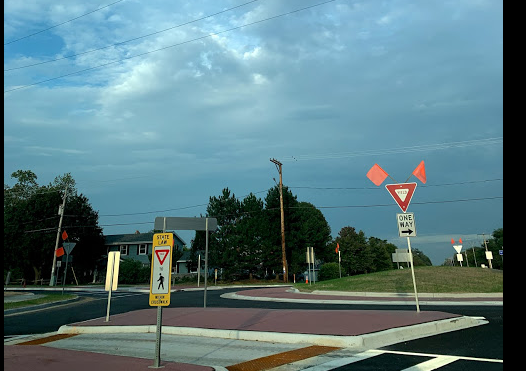For the whole summer, the major Franklin intersection of Drexel Avenue and 51st Street has been under construction due to the creation of a new roundabout. I’m sure many were annoyed of the long detours they had to take, and the delays caused. But on August 30, the new roundabout officially opened, in time for the home football game against Appleton North.
I went in the roundabout for the first time that night while I was heading home after the marching band’s halftime show. For me, personally, it was really nice because I didn’t have to be stressed out about waiting until it’s whoever’s turn at a stop sign. They even had helpful little street signs pointing in the direction of whichever road you want to go to.
This isn’t Franklin’s first roundabout. The first one was built about 10 years ago during the construction of the Shoppes at Wyndham Village (think where Target is). That one only has 3 ways, primarily to get into the parking lot of the shopping center. It isn’t a major intersection either. There’s a larger roundabout a bit further away in Hales Corners, at the busy intersection of Forest Home and Janesville Road. It has two lanes and was completed last summer.
The city of Franklin decided to change the four-way stop into a one lane roundabout because of large backups each morning and evening, and a roundabout was thought of as the best solution to that problem. However, some controversy was created because many adults and new drivers are not familiar with the concept of a four-way roundabout and how it works. Whether you like it or not, the roundabout is here to stay, and it’s important to know the long-term benefits of one and how it works, instead of being frustrated every time you need to pass through it.
According to the Washington State Department of Transportation, roundabouts help to reduce the likelihood and severity of collisions. This is because of the low travel speeds required, where drivers must slow down and yield to traffic before entering a roundabout. This creates a continuous and circular flow of traffic where neither side is required to stop completely, as opposed to traffic lights where backups will still be created. Since there is less stop and go, traffic will move more quickly overall, and reduce delays. Also, the one-way travel required in a roundabout helps eliminate the possibility for t-bone and head-on collisions.
Roundabouts being “safer” does not mean accident-free and there are many ways accidents can occur within roundabouts. Additionally, there will always be “that guy” on the road who doesn’t know or refuses to learn the proper way around roundabouts. As long as you’re focused while driving, which you always should be, roundabouts should be a piece of cake, and it is much better than sitting and waiting at the backed up stop sign for what feels like an eternity. Regardless if you hate it or love it, roundabouts are a big part of modern driving and we might as well learn the right way to use them.
Resources:
https://en.wikipedia.org/wiki/Roundabout
https://www.wsdot.wa.gov/Safety/roundabouts/benefits.htm
http://blog.aisinsurance.com/2015/02/02/benefits-of-roundabouts/

